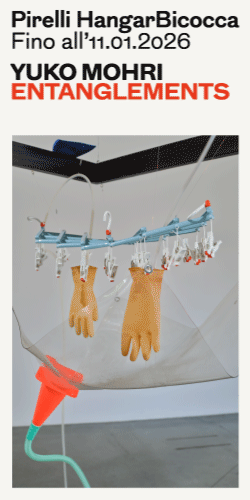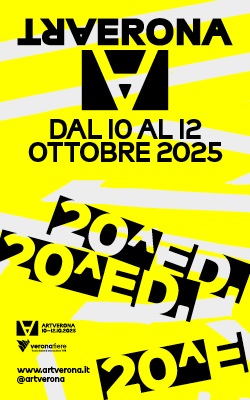[nemus_slider id=”55060″]
English text below
Le opere che sorprendono non hanno un intento dichiarato, una descrizione facile, non veicolano un messaggio preciso, ma lo proteggono con una forma composta. Elizabeth McAlpine, nella sua prima personale in Italia, da Rita Urso Artopiagallery fino al 28 Aprile, le costruisce con eleganza rigorosa e senza eccessi. Quando la struttura formale si sovrappone all’intento – che in questo caso è il processo stesso che le forma – non è necessario conoscerlo completamente per poter arrivare a un punto di soddisfazione. Intravedere o scoprire quanto sta prima dell’opera cambia definitivamente il modo in cui la percepiamo dopo, amplificandone l’effetto.
Cinematic Sediments raccoglie una serie di stampe iniziata nel 2013: The Ends, ottenute dallo sviluppo in camera oscura della sovrapposizione di parti terminali della pellicola cinematografica. Questi lembi, quelli più maneggiati, per cui spesso rovinati, graffiati, esposti alla luce e alla polvere sono riorganizzati, tolti dalla struttura narrativa in divenire che è il cinema, per fare parte di un nuovo spazio – quello astratto dell’opera – costruito sul modello di una struttura geologica in cui il tempo non crea linearità ma stratificazione spaziale. Le tende di colore sono l’effetto della registrazione sonora sui fotogrammi e aggiungono un ulteriore fattore alle variabili spazio-tempo che sono qui alterate togliendo ogni strato di pellicola – che corrisponde a 0.0416 secondi – dalla sua sequenza.
Se in The Ends le grandi costanti della realtà sono riassunte in una superficie bidimensionale, The Raid (101 minutes) le allinea e le segmenta in una scultura a parete composta da sette aste di ottone, che incastonano al loro interno ogni fotogramma dell’omonimo film che è stato ritagliato, riallineato e riunito da due bacchette di acciaio che passano attraverso le perforazioni dei bordi della pellicola. Quest’operazione stravolge la struttura narrativa del film, che diviene un flusso interrotto, sezionato, che si sviluppa in verticale. Quanto sembra inizialmente definibile e circoscritto risulta essere un oggetto ibrido. McAlpine cerca e ottiene quest’ambiguità attraverso il processo e il materiale; se il primo è stravolto, modificato e reinventato il secondo è una costante tramite la cui fisicità (quella della pellicola), McAlpine guarda al film con un atteggiamento allo stesso tempo nostalgico e rivoluzionario.
Cinematic Sediments è parte di una serie di mostre che Artopia dedica all’immagine cinematografica, la galleria presenterà il lavoro di McAlpine a Art Brussels (22-24 April)

Rita Urso presents the first solo show in Italy of English artist Elizabeth McAlpine (London, 1973). After the exhibition projects dedicated to the relationship between time and the film-photographic image, held
in the gallery over the course of the last two years (The Image of Time, 2014, Ophelia, 2015) Rita Urso is bringing to Milan an artist who has explored this very relationship with conviction and insight over the last decade. Often making use of film as a means of expression in and of itself, McAlpine has always stood out among artists who work with moving images and cinematic practices for her attention to the material itself, to the medium of film as film, and for her stratigraphic conception of time, often made of overlaps and superimpositions rather than scrolling, of depth rather than length. This is why much of her work has been featured both at film festivals as well as in group shows on the theme in prestigious galleries around the world: at the Metropolitan Museum of Art in New York (2013), at the Perth Institute of Contemporary Art in Australia (2012 and 2013) at the Tate Modern in London and at Art Basel (2006, 2010). McAlpine is represented by Laura Bartlett Gallery, London and Laurel Gitlen, New York.
The exhibition entitled cinematic sediments features for the first time a selection of works by the artist which best attest to her interest in “film geology”. The selection includes six type prints from the series The Ends, begun in 2013: a series of single images based on the residual photograms that make up the physical, rather than the narrative, aspect of film. Taken from 35mm film, these end strips have recorded the accidental treatment of man and time (scratches, dust, overexposures) and are superimposed over one another by the artist, in a geology of optics and temporality, which (finally) leads to a
single image that is often broken down into an aniconic apparition: a central void lined at the sides by smears and bright chromatic rings that are defined in the so-called soundtrack of the film. A second paradigmatic work on display is the recent The Raid from 2015 in which the artist rearranges the eponymous 35mm film into seven strips, so that each film frame is physically superimposed upon each other, thus creating a narration by means of their very materiality; it follows a method which McAlpine has adopted for other works: “I’m attracted to the materiality of film because it is the only medium in which you can represent time as something physical, concrete; of a given time as duration, as something that you can grasp and which reminds me of layers of rock sediment, after millennia”.
The show will open Thursday 18th February 2016 at 7pm and will run until 28th April 2016, from Tuesday to Friday from 3pm to 7pm, and Monday and Saturday by appointment. The catalogue dedicated to the show is accompanied by a text by Denis Viva, art historian and professor at the universities of Trento and Udine.
(Press release)













